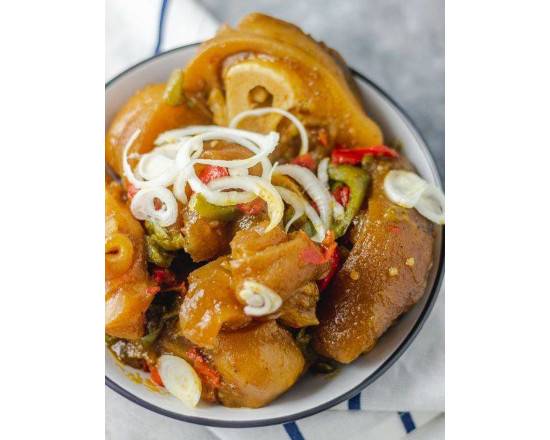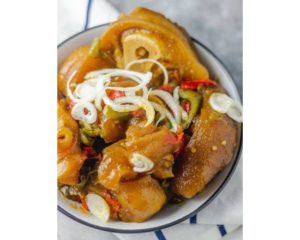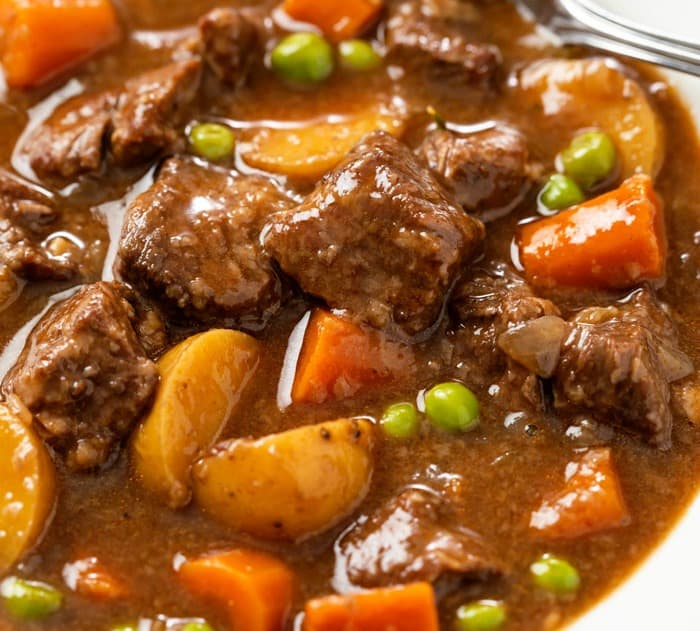Cow heels, also known as cow feet or ox trotters, are the lower part of a cow’s leg, specifically the section below the knee or hock joint. They are a type of offal or organ meat commonly used in various culinary traditions around the world.

How to cook cow heels faster
Cow heels are characterized by their tough, collagen-rich texture. The meat from this part of the cow is known for its gelatinous quality when cooked slowly over a long period of time. Due to their tough nature, cow heels are often used in dishes that require slow cooking methods to break down the connective tissues and make the meat tender and flavorful.In many cultures, cow heels are utilized to add richness and thickness to stews, soups, and broths. They are particularly popular in dishes like oxtail soup, cow heel soup, or traditional Jamaican cow foot stew. The gelatin released from the bones and connective tissues during cooking imparts a thick and hearty consistency to these preparations.Cooking cow heels, also known as cow feet or ox trotters, can be a time-consuming process due to their tough nature. However, there are a few methods you can use to speed up the cooking time. Here's a recipe to cook cow heels faster:
Ingredients
- 2-3 cow heels
- Water (enough to cover the cow heels)
- 2 tablespoons vegetable oil
- 1 large onion, chopped
- 3 cloves garlic, minced
- 2 bay leaves
- 1 teaspoon paprika
- 1 teaspoon ground cumin
- 1 teaspoon ground coriander
- Salt and pepper to taste
- Fresh herbs for garnish (optional)
Instructions
- Clean the cow heels thoroughly, removing any dirt or debris. Cut them into smaller pieces if desired.2. Place the cow heels in a large pot and cover them with water. Bring the water to a boil over high heat.3. Once the water boils, reduce the heat to medium-low and simmer the cow heels for about 10 minutes. This initial boiling helps to remove any impurities.4. Drain the water from the pot and rinse the cow heels with cold water. Set them aside.5. Heat the vegetable oil in the same pot over medium heat. Add the chopped onion and minced garlic, and sauté until the onion is translucent.6. Return the cow heels to the pot and add enough fresh water to cover them. Add the bay leaves, paprika, cumin, coriander, salt, and pepper. Stir well to combine.7. Bring the water to a boil once again, then reduce the heat to low and cover the pot with a lid. Simmer the cow heels for approximately 1 to 2 hours, or until they become tender.8. Check the cow heels periodically during cooking to ensure they don't become overcooked. The cooking time may vary depending on the size and tenderness of the cow heels.9. Once the cow heels are tender, remove them from the pot and let them cool slightly. You can then serve them as is or proceed with another recipe, such as making a stew or curry.10. Garnish the cooked cow heels with fresh herbs, if desired, and serve them hot with your preferred accompaniments.By initially boiling the cow heels and then simmering them with spices, you can help reduce the cooking time while still achieving tender results. However, do keep in mind that cow heels are naturally tough, and even with these methods, they may still require a significant amount of cooking time to become fully tender.
Video
Notes
Cow heels are also prized for their flavor and are often used to create stocks and broths as a base for sauces, gravies, and other recipes. When cooked properly, the meat can be flavorful and succulent, with a deep, rich taste.
It's worth noting that cow heels require longer cooking times to become tender due to their collagen content. Therefore, they are best suited for slow cooking methods like simmering, braising, or pressure cooking to achieve optimal results.
Nutrition
Serving: 50g
Tried this recipe?Let us know how it was!






